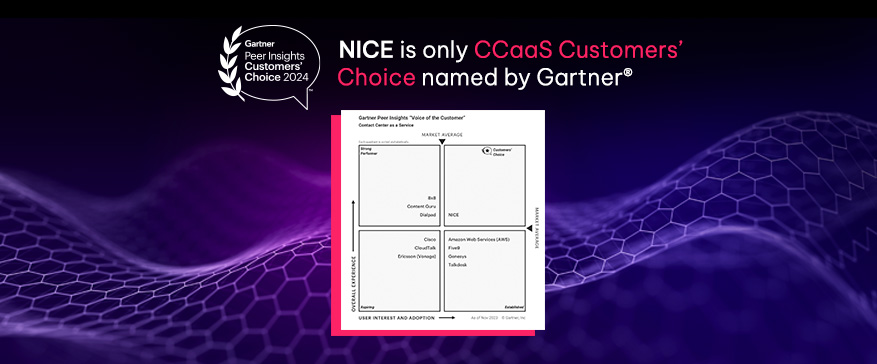

1. Use AI-powered agent assistance to automate empathy for call contact center agents


Data source: American Management Association: “The Hard Truth About Soft Skills” (2019)Up until recently, this was just a limitation of the quality monitoring process that contact center managers had to live with. But advances in artificial intelligence have fundamentally changed the game. AI-powered real-time agent assistance tools can monitor voice interactions as they're happening. AI enables these solutions to measure customer sentiment by assessing factors such as voice pitch and volume, length of silences, and use of keywords. Based on sentiment, the software then coaches agents on behaviors, including showing empathy, that has been scientifically proven to increase satisfaction.Real-time interaction guidance yields several benefits. Because these tools provide real-time alerts, they give agents the ability to improve interactions while they're occurring. Equally as important, empathy for contact center agents will always be top of mind and their soft skills will improve with repetitive coaching and practice. Real-time interaction guidance software will upgrade a call center's agent development results and is a powerful supplement to quality review processes.Here's a fun video that shows the power of AI-supported agent guidance in the call center in-action:
2. Use smart routing to make customers feel heard
If you were frustrated and needed customer support, would you prefer to call into a company and listen to a long list of routing options or state your need aloud naturally and have the routing respond based on what you’ve said? Seems like a no-brainer, right?Any instance a customer reaches out to your company for support is an important time to demonstrate empathy and show you understand and care about a customer’s needs. Artificial intelligence-powered routing can help. The AI listens to the customer and using natural language processing and all other customer data sources on-hand, including past service results, sentiment, and recent interactions, and more, it can route their call accordingly.What makes it even more empathetic, is pairing the customer with an agent that will most likely “get” them and make them feel supported. Beyond just routing a call to the first available agent, some intelligent routing platforms can prescribe the best agent match for the customer.Predicting the best connection uses all available data sources. In addition to all the previously mentioned customer data, intelligent routing uses all available agent data, like their performance on past similar calls or types of customers, each agent’s unique skills, and their familiarity with different aspects of your business, to then determine which agent is best for the customer’s needs, preferences, and communication style.AI takes interaction routing to the next level by considering not just agent skills, but also softer characteristics that should lead to more empathetic interactions that can strengthen relationships and lead to higher customer satisfaction.3. Use agent scripting to help agents apply empathy in customer service


- "I understand how that would be frustrating."
- "I'm sorry you're disappointed. I will fix this. "
- "I want to make sure I understand the issue. [then summarize what they said]"
- "Thank you for being so patient."
- "You are completely right. That shouldn't have happened."
4. Enhance new hire and ongoing soft skill training

- 87% of consumers are willing to buy more products if they have an exceptional customer experience [1]
- 81% of consumers are willing to recommend a company to others if they have an exceptional customer experience [2]
- 66% of customers expect companies to understand their needs and expectations [3]
Active listening
Since an important part of being empathetic involves showing customers you understand them, agents need to have strong active listening skills. This means agents need to be able to really listen to customers instead of being distracted by thinking through their responses. Agents should also ask clarifying questions and accurately paraphrase the issue back to the customer to show they grasped the issue. Good active listening will give customers confidence that they are understood. Role-playing is an effective way to teach active listening skills.Customer service empathy words
Like scripting, agents need to know what to say to convey empathy. Having a list of customer service empathy words in their back pocket can help ensure agents aren't caught flat-footed when the heat is on. Words matter, especially when you're speaking to someone who's frustrated, disappointed, or angry. Agents should know to use terms and phrases like the following to let customers know they're being heard and that their issue will be resolved:Customer service empathy words and phrases:
- Appreciate — “I appreciate your patience”
- Understand — “I understand how this can be frustrating.”
- Immediately — “I’ll fix this immediately.”
- Fix — “I can fix that.”
- I will — “I will work with our team here to resolve this.”
- I see — “I see the problem.”
- I know — “I know how frustrating this can feel.”
- Thank you — “Thank you for providing additional context.”
- Sorry — “I’m sorry to hear that you’re having trouble”
- I hear — “I can hear that this is important for you.”
- Right — “You’re right.”
Listening comprehension
How does listening comprehension differ from active listening? Active listening is important because it's a way to confirm the facts and reassure customers. But being able to paraphrase information doesn't always guarantee that an agent understands intent. Some customers (and people in general) don't say exactly what they want, instead of relying on other people to infer meaning. It's important for agents to recognize this and be able to read between the lines. True understanding requires comprehension.To make it easier to train your agents on critical skills like empathy, we created some pre-built agent empathy training you can start giving agents today as part of this free agent and supervisor training bundle.
5. Collect and act on customer feedback

Use customer survey tools to learn where empathy is needed
Good customer survey software is flexible and user-friendly. End-users can configure their own survey questions, distribute surveys through multiple channels, and slice and dice the results to get actionable insights. This flexibility empowers contact centers to run industry standard survey types such as the following.- Customer satisfaction. Customer satisfaction surveys measure satisfaction at a specific point and time with a specific facet of the business, for example, a customer service interaction. If you're implementing a new empathy initiative, consider baselining your contact center's satisfaction score so you can determine if your initiative is having an impact.
- Net Promoter Score. Net Promoter Score (NPS) surveys ask customers how likely they are to recommend a brand to friends and colleagues. High brand advocacy is correlated to high loyalty.
- Customer effort. More companies are adopting customer effort surveys, probably because the measurement makes a lot of sense given the current focus on the customer journey. Customer effort surveys measure if an organization is easy or hard to do business with and can shine a light on pain points that should be eliminated.
Interaction analytics
Customer service interactions are a gold mine of customer information that has mostly remained out of reach until recently. It used to be impractical to transform so many conversations into meaningful insights, but artificial intelligence has made it possible. AI-powered interaction analytics software analyzes 100% of contacts from all channels to identify customer sentiment, contact drivers, emerging problems, trends, and more. This lets businesses know if their customers are feeling positive or negative and enable proactive problem management. The right tools can even calculate sentiment scores at the agent level, which allows supervisors to identify training opportunities and agents who may need to work on their empathy skills.Put empathy into practice with help from these resources
Empathy is a critical attribute to meeting customer expectations. To get it right, try the above five ways to improve customer satisfaction scores using customer empathy:- Use AI-powered agent assistance to automate empathy for call center agents
- Use smart routing to make customers feel heard
- Use agent scripting to help agents apply empathy in customer service
- Enhance new hire and ongoing soft skill training
- Collect and act on customer feedback










